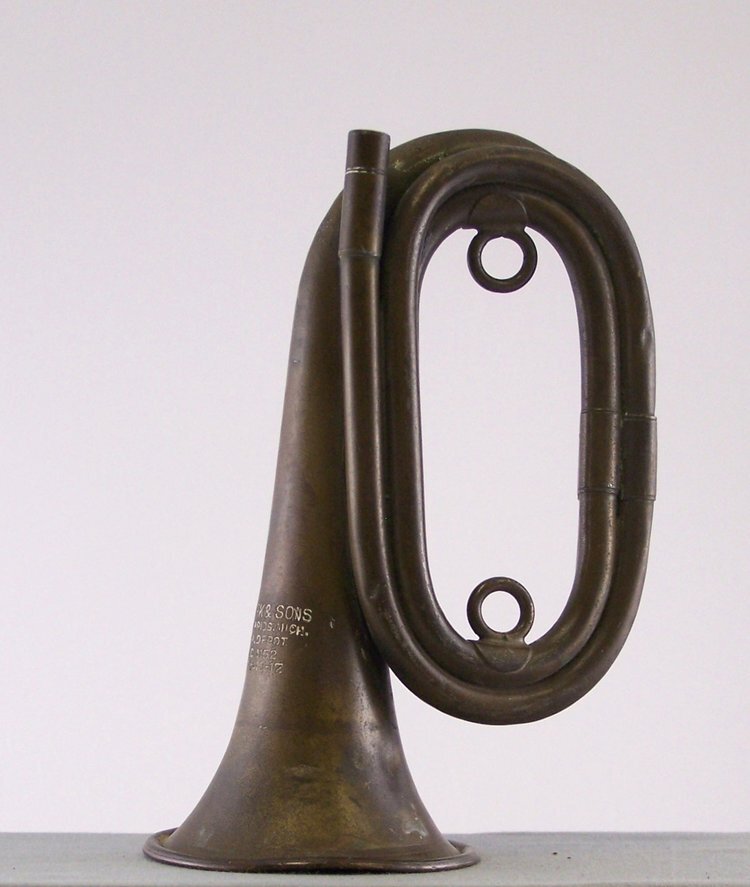Caroline C. Morris
Catalog Number: 1984.100.27
Brass bugles can make a racket. This one may be a diminutive eight inches, but there is nothing diminutive about its sound. J.W. York & Sons of Grand Rapids, Michigan, made thousands of brass instruments at the turn of the century, including this one. Markings on the bell indicate this instrument was manufactured according to military specifications for a “Trench bugle” in B flat in 1917, and was probably issued to an infantryman, though bugles were common in all branches of service. The triple-twist bugle has eyelets for a leather strap that is now lost, as is the mouthpiece.
Bugles have played a role in the military for centuries. They are especially useful for signaling the daily routine to large groups of people – think “Reveille” and “Taps” – or to coordinate troop movements. The “Trench bugle,” however, was not well-adapted to the style of warfare for which it was named. For troops in the trenches, priorities included being invisible, being silent, and being unpredictable. The bugle made all three objectives difficult.
If this bugle has seen action, it is more likely that a Boy Scout wielded it than a soldier. The Army sold or donated thousands of surplus bugles to civic groups in the years during and after the First World War. The Boy Scouts, founded in 1910 in the United States, placed a premium on military-style discipline and scout uniformity, so bugles were a natural accessory. Instrument manufacturers came to this realization as early as 1916, and began running ads for bugles such as this one in Boys’ Life, the official Boy Scouts magazine. For $5.50, a Boy Scout could make “martial music” to express “the spirit of VICTORY – to LIBERTY,” according to an ad in Boys’ Life in Oct. 1918. The bugle was not particularly useful to a soldier in the trenches perhaps, but in a kid’s hands it could serve its patriotic duty nonetheless.
This article was originally published in the La Crosse Tribune.
This object can be viewed in our online collections database by clicking here.


